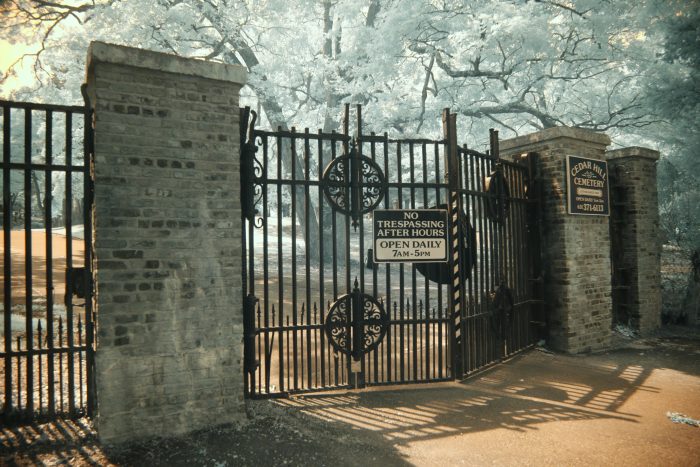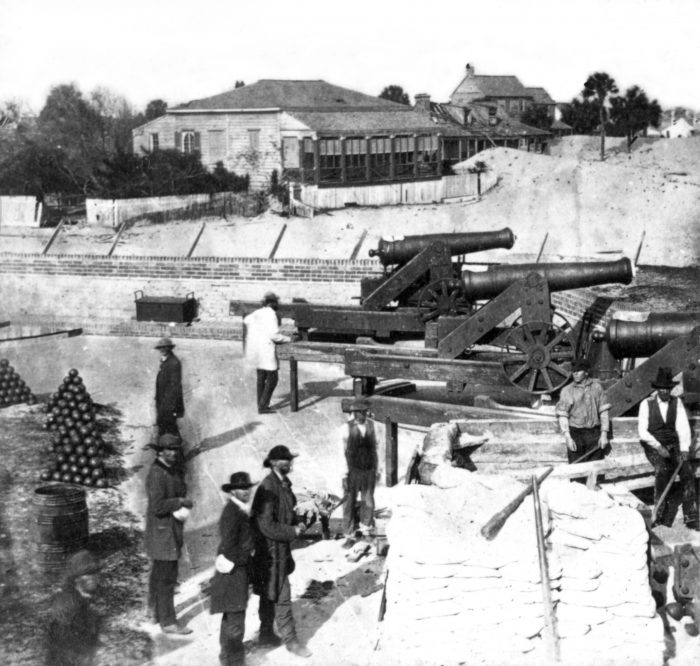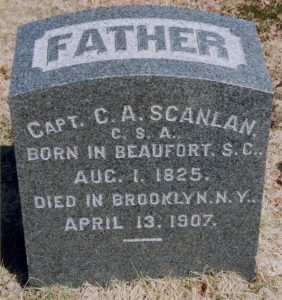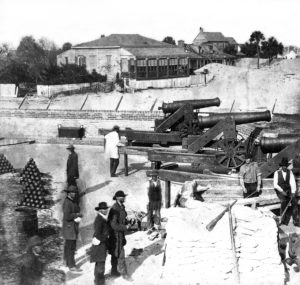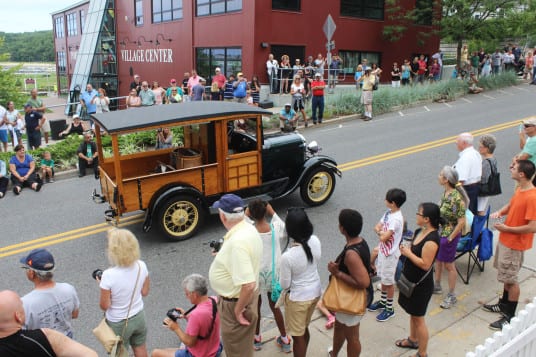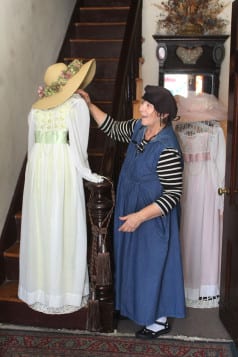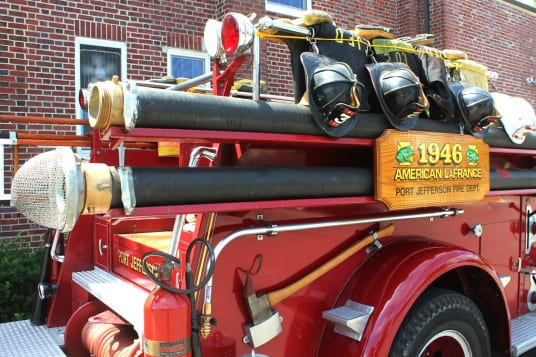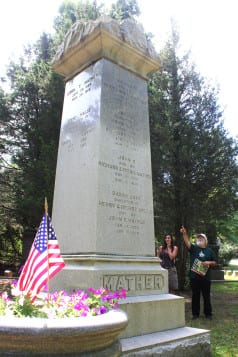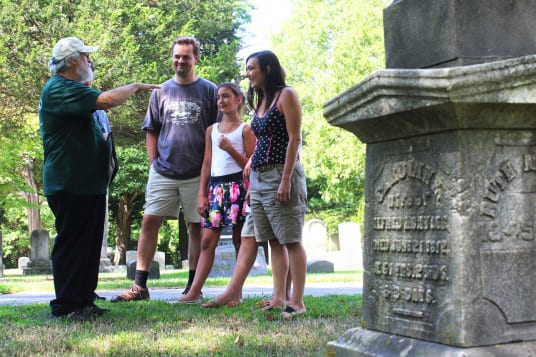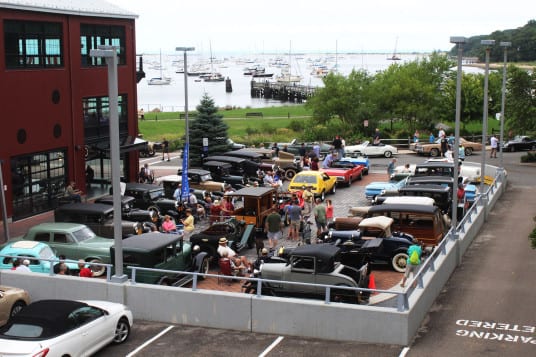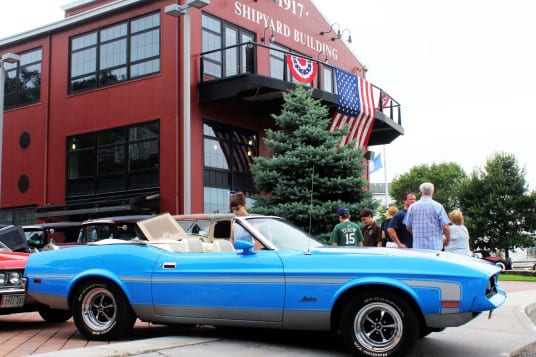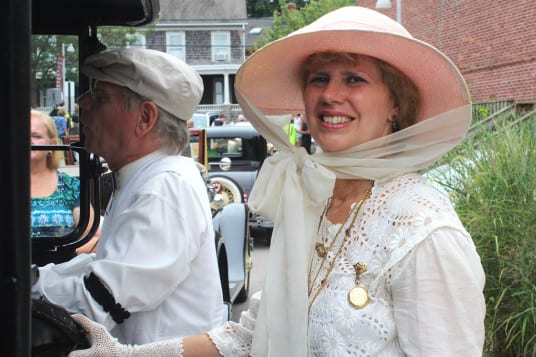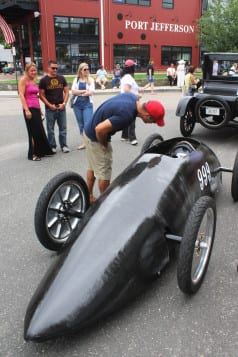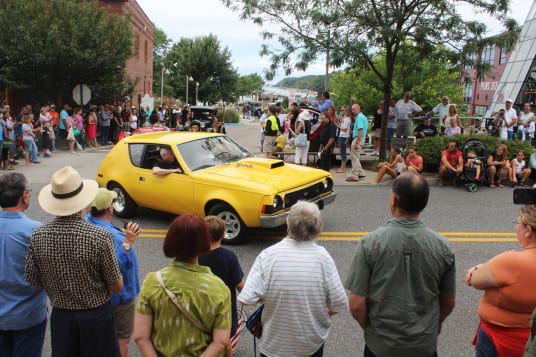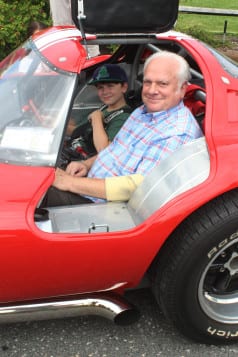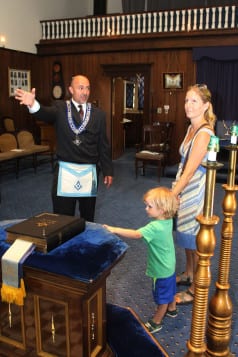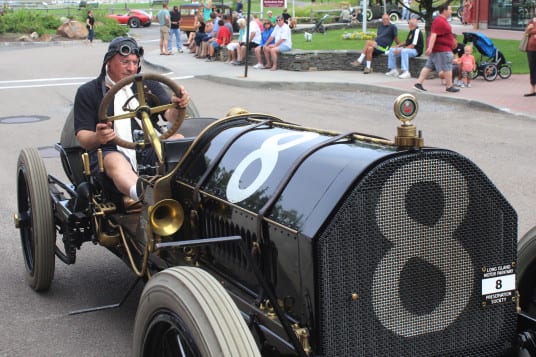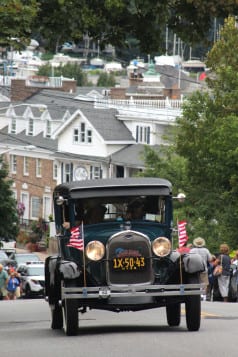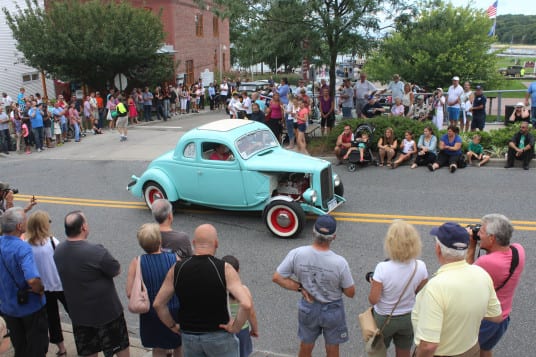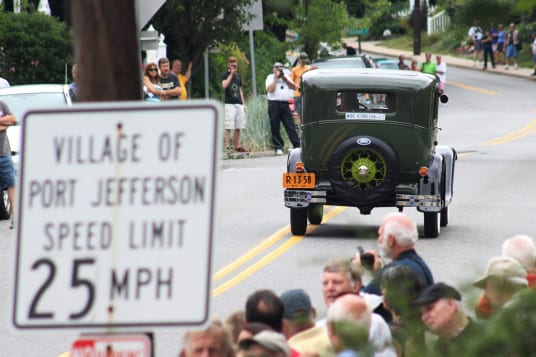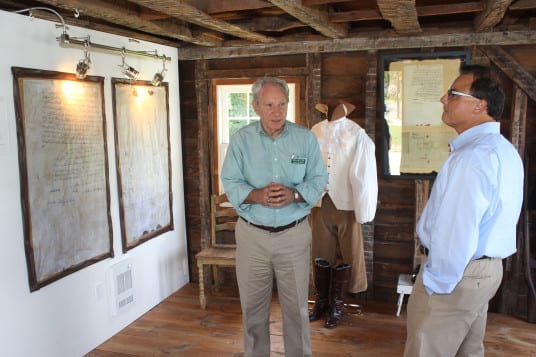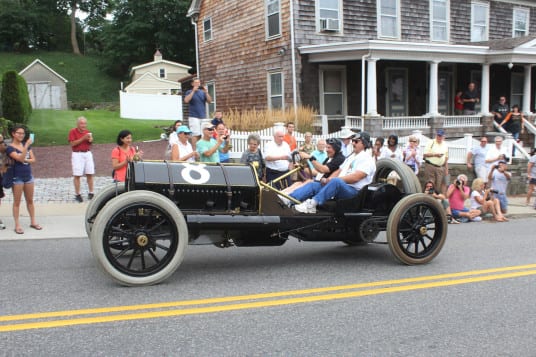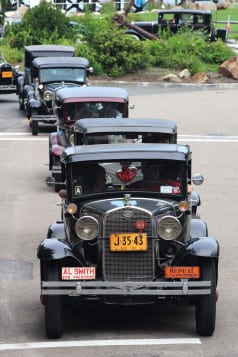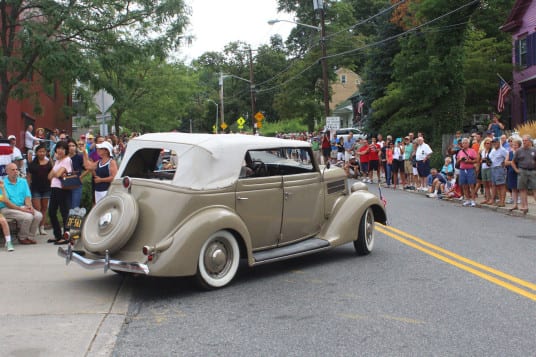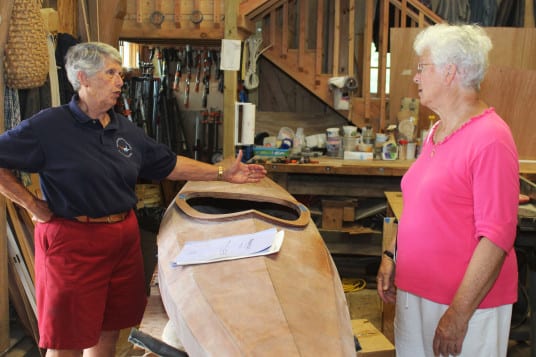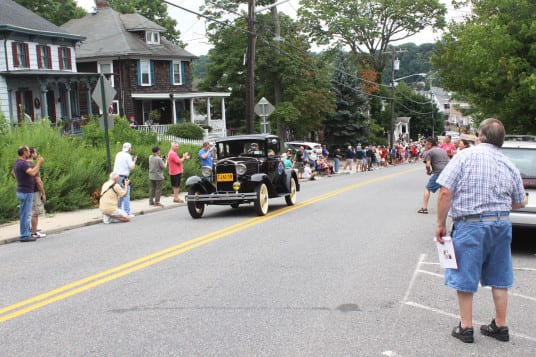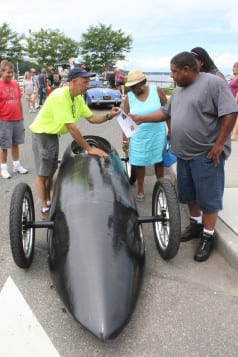By Tara Mae
From slightly spooky to sublimely serene, the Port Jefferson Village Center’s latest exhibit captures the majesty and tranquility of Port Jefferson’s historic Cedar Hill Cemetery.
Titled Cedar Hill Cemetery: Hidden Sanctuary of Our Past, the exhibit of approximately 60 photos offers insight into the still-operational, non-denominational cemetery as seen through the lens of Port Jefferson Historian Chris Ryon and historic photographs from the Library of Congress.
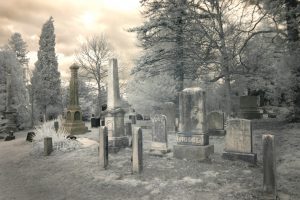
Photo by Chris Ryon
Located on the second floor mezzanine of the Center, the show, which opens Sept. 5, features black and white, color, and near-infrared photographs, evoking different emotions and transcending different periods of time.
The photos trace the seasons, years, and decades of the cemetery, which was established in the mid-19th century and houses the grave markers for some of the area’s most prominent and historic names, including members of the Woodhull, Roe, and Mather families.
Ryon, who began regularly photographing the cemetery about ten years ago, curated the exhibit and contributed most of the images, including all of the near-infrared pictures, which require a specially outfitted camera. He said he is fascinated by the distinctive, haunting images it can yield.
One striking example is the Mather family marker, a 41-ton obelisk that is the largest memorial in Cedar Hill. Standing high above its neighbors, a focal point in any photo, it features the names of John R., prominent shipbuilder, and his son, John Titus, founder of Mather Hospital.
With the near-infrared, details such as snow covered tombstones and skylines framed by trees and awash in clouds, the hint of the harbor in the background, take on a gothic luster. The cemetery’s gates appear stark and imposing. Names and details of the gravestones are frequently in sharp focus, names clearly visible.
“I just keep going back to infrared; it is just so ominous looking … green turns white, shadows become more pronounced, etc,” Ryon said, adding that he was drawn to the cemetery as a subject because of his dual appreciation of photography and history. However, he sees the exhibit and cemetery appealing to more than photography and history buffs.
“This cemetery has everything: photographic interest, history, insight into the lives of people in Port Jefferson … I return because it is a serene, moody place different from our everyday lives,” Ryon explained. “Through this exhibit, we are trying to encourage people to visit the cemetery; they will be rewarded for it.”
Situated on 23 acres of carefully tended rolling hills (the highest point is 271 feet above sea level), grass roads, and reimagined sheep pasture at the end of Liberty Avenue, Superintendent of the cemetery Ken Boehm described Cedar Hill as “an oasis in the middle of suburbia.” An additional few acres of untouched wooded property enhances the feeling that the cemetery complements and almost sprouts from the natural world.
Architectural details, such a somewhat squat, “brick house” that once housed the deceased awaiting burial and now holds landscaping equipment, are testaments to the cemetery’s evolution from privately owned land to publicly accessible final respite. And, of course, historic Cedar Hill Cemetery continues to function as originally intended.
“Not to sound corny or anything, but we are helping people at the worst time in their lives, so to be able to maintain this place, make it a sanctuary any way we can, is very rewarding,” Boehm said.
In April of 1859 Hubbard Gildersleeve sold 13 acres of his land to the Cedar Hill Cemetery Association, which had been established on March 30, 1859, with the express purpose of establishing a public cemetery. Prior to this, residents had largely continued the long held custom of burying loved ones in family plots on private property.
“These larger cemeteries were all established around the same time; there was a change in the way we thought about the dead, and how we wanted to respect them,” Ryon said.
The Association still exists today and oversees the cemetery’s operations.
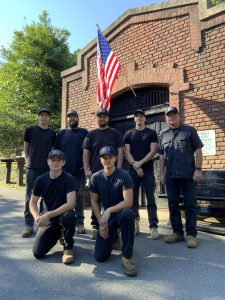
Cedar Hill’s first official burial was of Mary B. Hulse, wife of Charles L. Hulse, who died March 27, 1859. Gravestones, belonging to people who predeceased her, soon joined Mrs. Hulse.
Since it was considered both disrespectful and unwise to disinter the actual bodies from their more informal resting places, bits of soil from those locations were moved with the markers to their new homes. Families who visited would often picnic and tend the gravesites; photographs from different eras may show them sitting among the graves or looking towards the water.
People still come to visit their loved ones, do some plantings at the family plots, and take in the views, though they rarely picnic, according to Boehm.
Other modifications, not just in behavior but appearance, have been made over the years. The tall gates, somehow both welcoming and austere, which greet or guard the entrance to the cemetery depending on the time of day, were purchased from a salvage yard in 1971. They once protected the 71st Regiment Armory on Park Avenue in New York City, and need some TLC after so much time on the job.
“The gates will be restored; people want to restore them. Fundraising and other efforts are in development,” Ryon said.
This ties into the larger goal of Hidden Sanctuary: to bring more public awareness to its existence and garner more support for its preservation and maintenance. The Cemetery Association and Village of Port Jefferson are discussing plans to create QR codes, implement cemetery tours, and generally invite people to take advantage of all the cemetery has to offer.
“The exhibit is important to make the public aware of this beautiful sanctuary right in our village. Many do not know it exists. We are hoping to share our cemetery with everyone and take some of the stigma out. We are non-denominational, all are welcome,” President of the Cemetery Association Gail Tilton said.
The Port Jefferson Gallery at the Village Center, 101 E. Broadway, Port Jefferson presents Cedar Hill Cemetery: Hidden Sanctuary of Our Past from Sept. 5 to Oct. 31. Join them for an opening reception on Sunday, Sept. 11 from 1 to 3 p.m. Viewing hours are 9 a.m. to 9 p.m. daily. For more information about the exhibit, call 631-473-4778 or visit www.portjeff.com/gallery. To learn more about Cedar Hill Cemetery, call 631-371-6113 or visit www.cedarhillcemeterypj.com.

